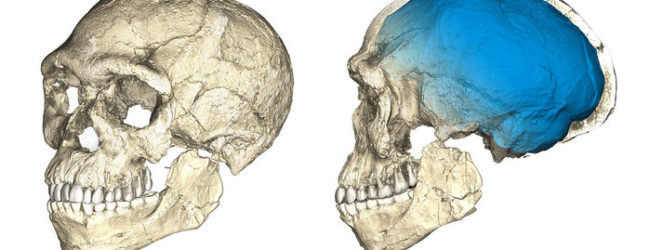
Jebel Irhoud, Morocco
Last year if someone asked when modern human evolution began, the answer would have been about 200,000 years ago. If someone asked you the same thing today, they might say 300,000 years ago…possibly.
How is it in the short span of one year, we have aged human beings by 100,000 years? Well, the answer lies simply in the wonderful world of scientific discoveries. Scientists have recently discovered the oldest Homo Sapiens fossils in a very unlikely place, the northern part of Africa, that suggests that human evolution began much earlier than we anticipated.
An unlikely place for human evolution?
North Africa is considered unlikely because largely East Africa is considered the “cradle of life” for the origins and evolution of humans. The “out of Africa” theory states early human beings were discovered 200,000 years in East Africa and migrated around the world in the last 100,000 years. Not only this, but the evolution of modern day humans has also been linked to parts of Southern Africa as a skull was found in Florisbad, South Africa, in the 1930s and originally dated to 260,000 years ago, but the reliability of that information has never been verified. North Africa has been largely been neglected in this aspect, which opens a wide range of possibilities and unanswered questions with this new discovery.
The Homo Sapiens fossils were discovered in Jebel Irhoud in Morocco by Jean-Jacques Hublin and Abdelouahed Ben-Ncer of the National Institute for Archaeology and Heritage in Morocco. This fascinating discovery includes a partial skull and a lower jaw and fossils belonging to five different individuals including three young adults, an adolescent and a child estimated to be 8 years old. The interesting fact which emerges from this is that the features in these fossils are very similar to modern human but their brain, upon construction, is found to be belonging to an earlier human species.
If living today, these pre-historic humans would be able to blend in with modern humans perhaps with one minor adjustment – hats to hide their oddly shaped heads.
Dating the Fossils
The scientists used two techniques to date these human fossils to about 300,000 years ago. Electron resonance spin dating was used which can estimate how long enamel has been bombarded by radiation from sediment. With this method, the scientists determined an Irhoud tooth was 286,000 (+/- 30,000) years. They also used thermoluminescence (TL) dating – a method that can gauge the last time an object was heated, by measuring the electrons trapped within it.
Dr. Hublin noted about the findings: “Our analysis convinced us that this material represents the very root of our species, the oldest Homo sapiens ever found in Africa or elsewhere.”
Hublin’s discovery is also backed by other scientists such Richard Roberts who is expert in luminescence dating at the University of Wollongong in Australia who noted that “People must have been involved in heating the flints, and these have been dated directly using well-established TL (thermoluminescence) techniques.”
Hublin’s discovery opens up several possibilities regarding the age of human evolution. These fossils and dates may assist researchers in finding out how these selected fossils from the past 600,000 years are related to modern humans and to one another, changing the discourse of this age-old (pun totally intended) debate.
What does it really mean?
It is pretty exciting to find out that human beings could be a lot older than we thought. Finding old fossils has been one of the biggest discoveries of this year but the work of scientists, paleoanthropologist and archaeologists has just begun.
Several researchers hope to return to Jebel Irhoud because there is still more to be excavated. The debate is ongoing but right now this discovery creates more questions than supply answers. The questions of how, when and where we evolved still remains.
——————————————————————————————————————————–
References